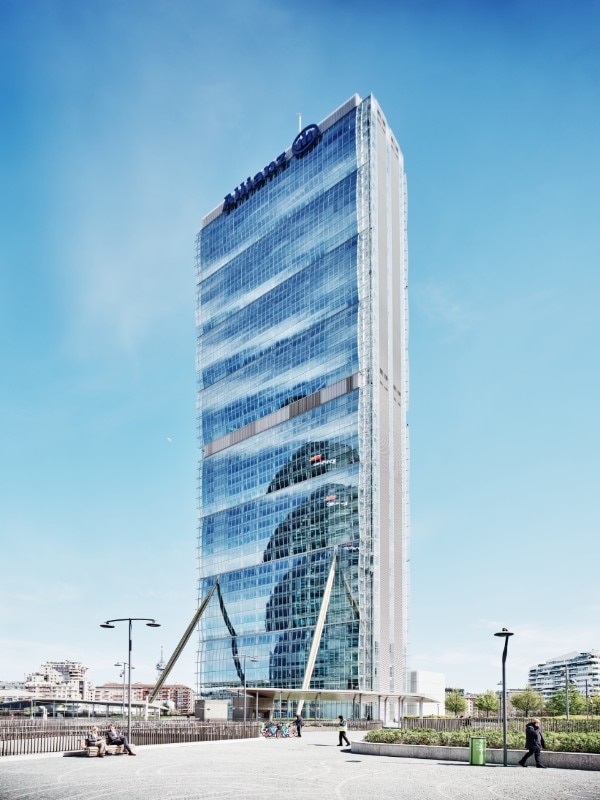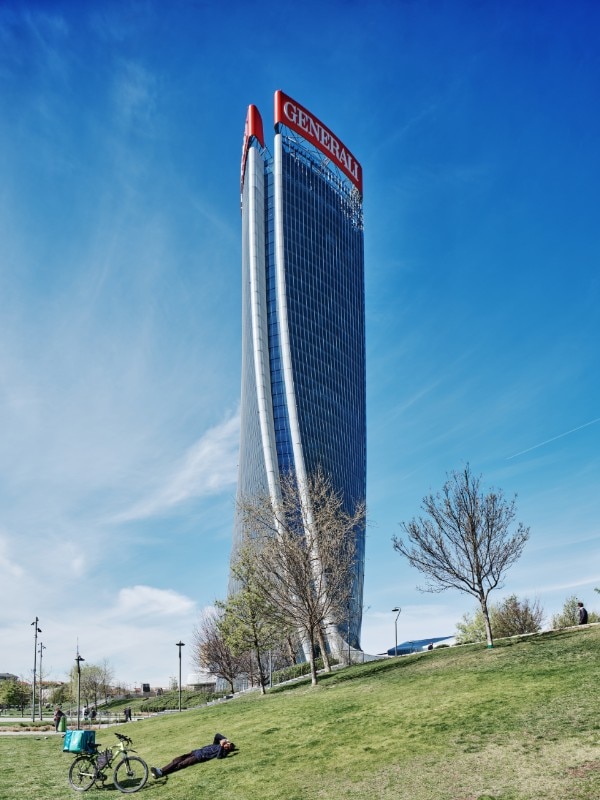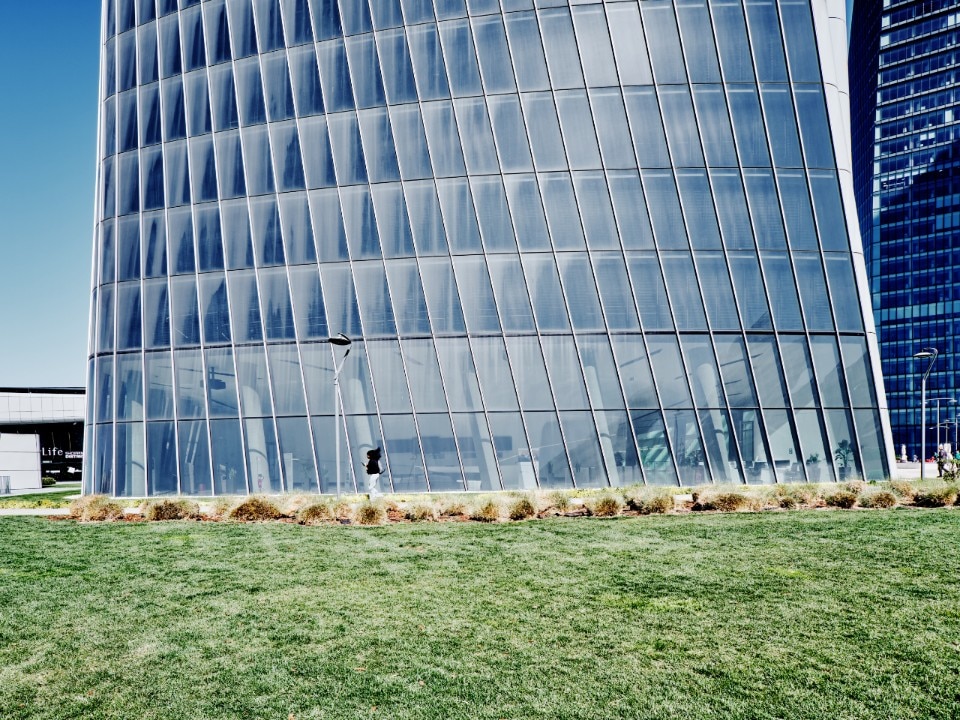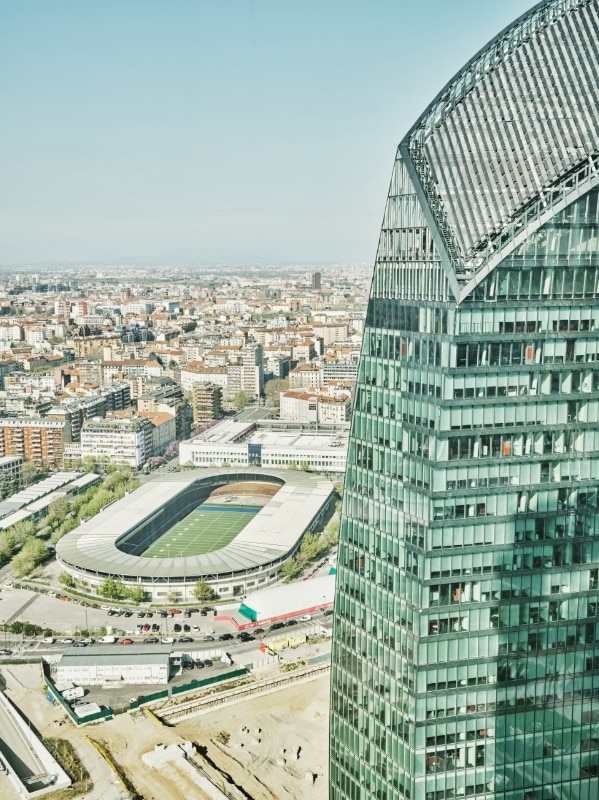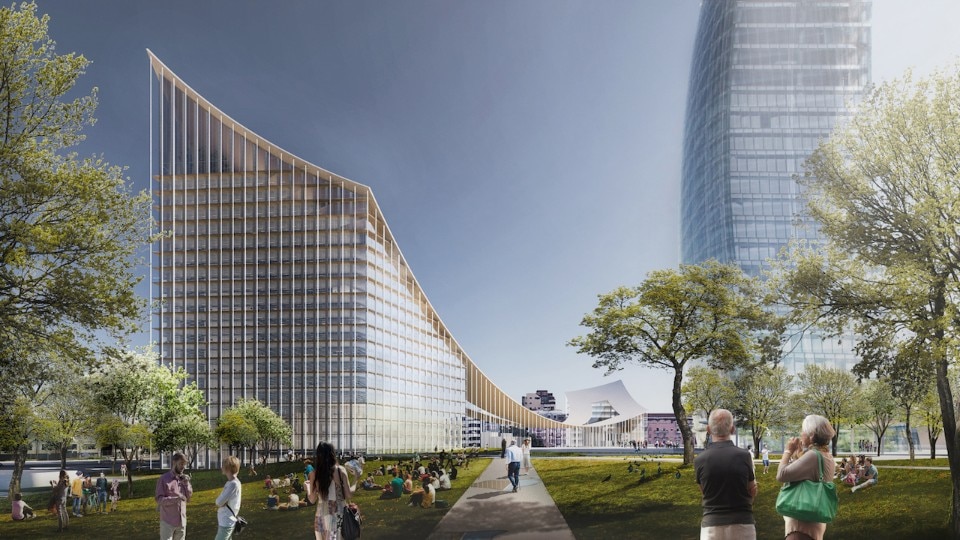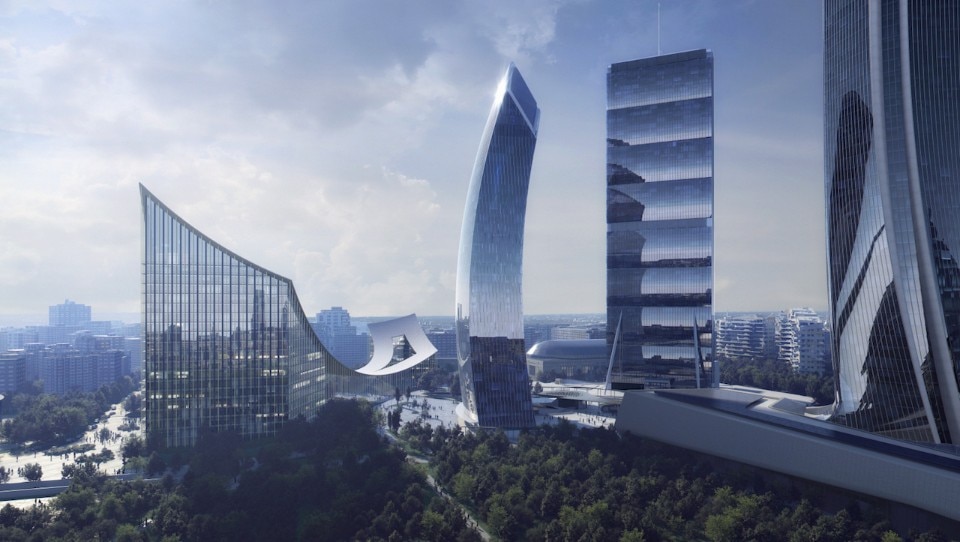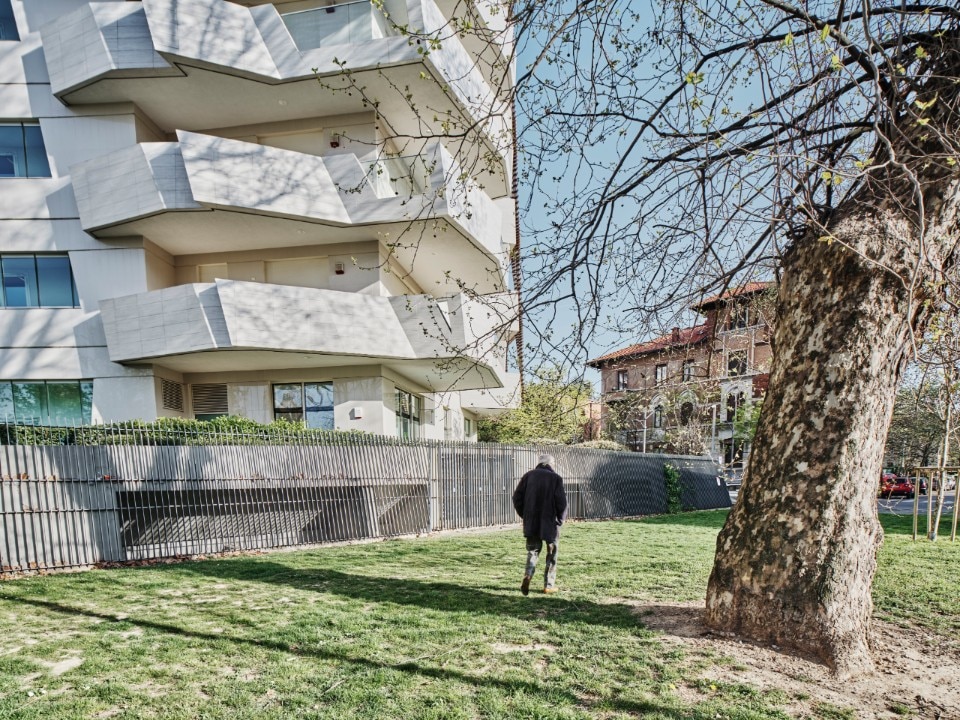by Alessandro Benetti
photo Marco Menghi
As early as the 1960s, Gio Ponti stated in a famous television interview that a successful skyline does not consist of isolated skyscrapers – it’s made of clusters of tall buildings that can be seen from afar over the urban fabric. At that time, only a few towers of the Business District proposed by the 1953 Master Plan were under construction in Milan. It was only between 2000 and 2010 that some of the “clusters” envisioned by Ponti were built in the Lombard capital, along with two major urban projects: Porta Nuova and CityLife.
Porta Nuova and CityLife are the Milan “frenemies” in the new millennium, openly competing in the local and global real estate market. Both have been created by the same mechanisms of negotiated urbanism, based on the collaboration between the public and private spheres. Both share the same vastness and colossal volumes – at least by Milanese standards. Both have heroically survived epochal economic crises without excessive downsizing. For Porta Nuova and CityLife, architectural quality is a means of cultural legitimacy and commercial promotion. That’s why they consist of a series of iconic buildings “signed” by world-renowned star architects, who were involved in the project even before the design process began. Many other parallels can be drawn between the two areas; they offer Milan new open spaces, carefully designed and dense with businesses that connect the “inside” – the project – and the “outside” – the surrounding urban fabric.
CityLife is now close to completion. Fifteen years have passed since the start of construction, which began a little later than Porta Nuova. The three main office towers and almost all of the residential units are completed and occupied. The mall is in full swing, while the park is still growing – although its future size and configuration are already palpable. The only thing missing is the gate building that will mark the entrance to the area from via Domodossola – but the excavators are already digging their way deep into the construction site. As we’re faced with a neighborhood that has finally taken shape and is now brimming with life, we can reflect on its past, present, and peculiarities.
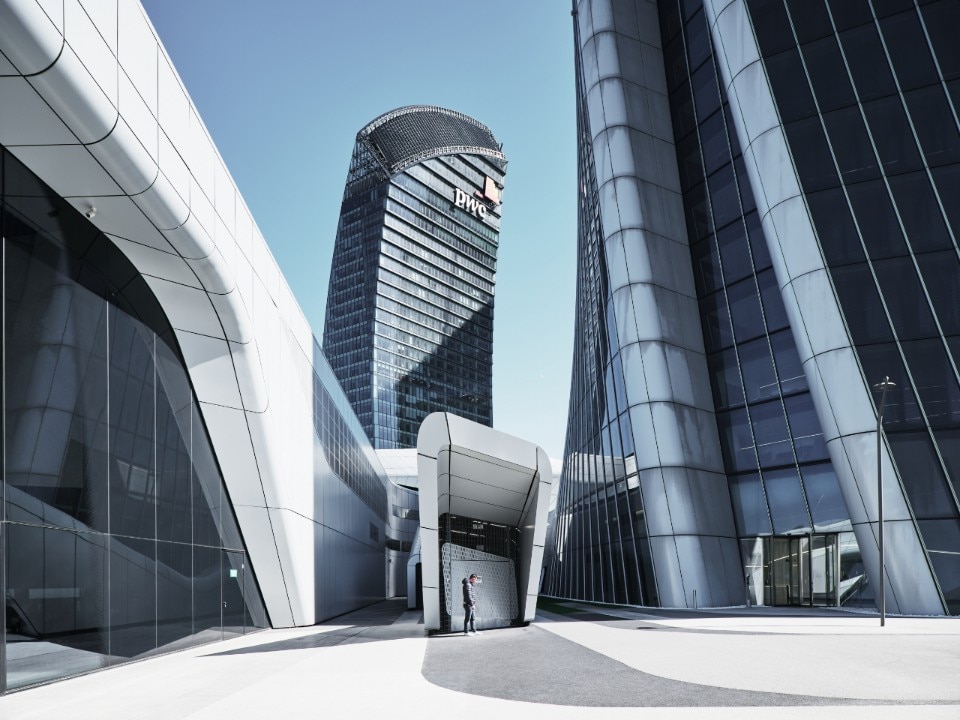
CityLife is located in a roughly square-shaped area. That’s why it’s so easy to spot on a satellite image of Milan – just like Parco Sempione and the Cimitero Monumentale. The area took on this shape in the nineteenth century to accommodate the Piazza d’Armi, which was moved from the Castello Sforzesco. In 1906 it hosted the International Exposition, and from 1923 it became the site of the Fiera Campionaria, becoming increasingly dense with many permanent and temporary structures. It kept this function until 2005. For almost a century and a half, the CityLife area has been clearly and deliberately separated from the middle-class residential areas that have developed on its edges over time.
Opening up the area and integrating it into the city is one of the challenges that CityLife has faced and continues to face, a challenge shared by Porta Nuova, which was built on a former railway yard. However, there’s a difference between the two. Porta Nuova, built exactly between the old city and the former working-class district of Isola, effectively removed the railroad tracks – a historic barrier – and allowed the quality and vitality of the city center to expand northward. On the other hand, CityLife aims to be a new barycenter for the social life of western Milan – an area that lacked large public spaces, housing, businesses, and local facilities. In this sense, the huge underground shopping center – which covers more than 30,000 square meters and is also accessible from the northwest highways – is the key element of the project, the magnet that channels the constant flow of local users and those from the entire metropolitan area.
Above and around this undoubtedly global mall, all of CityLife’s spaces and architectures unfold geometrically and conceptually. Here’s our rundown of the area’s buildings: a thoughtful guide to everything that’s been built in the neighborhood, with hints of what’s ahead.

 View gallery
View gallery
Completed in 2015, the 50-story, 209-meter-high (260 including the antenna) Allianz Tower is one of the last projects of Japanese architect Arata Isozaki (1931-2022), who co-designed it with Italian Andrea Maffei, a former partner in his firm and later founder of Amarchitects. Long a doyen of Japanese architecture, Isozaki was first a metabolist, then a postmodernist, and finally, as displayed in this project, a neo-internationalist. The tower consists of a simple parallelepiped, with brilliant proportions and an ultra-thin profile – so thin that during construction it was necessary to add four external buttresses that reduce oscillations. It’s the most emblematic of CityLife’s three skyscrapers – a transparent multiplication and layering of the same open office space. The glass façade is its most interesting element: instead of being a single vertical surface, the curtain wall is made up of units of convex panels. As a result, the building envelope becomes iridescent, marked by changing chiaroscuro and reflections. From certain perspectives and under precise lighting conditions, each of the “bellies” of the Allianz Tower (to use an anthropomorphic metaphor) reflects the same Milanese horizon. The city multiplies on the skin of the building, which becomes a mirror and a kaleidoscope. Among other remarkable features, many transparent elevators climb the two narrow façades, offering breathtaking panoramic views, while at the top of the tower is a replica of the Madonnina del Duomo, a tribute to what was once the inviolable peak of the Milan skyline.
Generali Tower
Zaha Hadid Architects
 View gallery
View gallery
In operation since 2018, ZHA’s Generali Tower is a 44-story, 177-meter skyscraper in the pure style of Zaha Hadid (1950-2016) – a late work by the designer who did not live to see it completed. It is a parametric architecture based on torsion (reminiscent of Santiago Calatrava’s “Turning Torso” in Malmö, completed in 2005) that twists from the ground up before realigning itself on its vertical axis. According to Hadid, who continued the structural and linguistic research of her entire career with this project, the geometry of the building is determined by the intersection of the three axes of Milan’s urban fabric, which meet and collide at the base of the tower, generating the vortex that defines its shape. The base on which it stands, which extends well beyond its outline, is intended to represent this very moment of tension. This geometric complexity required the adoption of devices to facilitate the use of the building: the two layers that make up the façade, for example, are separated by a variable distance that absorbs the irregularities of the envelope and allows the surfaces of each floor to be uniform.
PWC Tower
Daniel Libeskind
 View gallery
View gallery
Designed by Daniel Libeskind, Libeskind’s PWC Tower is the lowest of CityLife’s three skyscrapers (31 stories by 175 meters) and was the last to open, in 2020. It is also the one that has experienced the most tumultuous events and the most significant changes to the original design. In homage to Italian Renaissance architecture, its silhouette was originally conceived as part of the sphere that embraces Piazza Tre Torri. However, it was eventually necessary to straighten it. In addition, its concave façade could not be realized as a seamless surface due to the risk of mirror reflections and fires – in Milan, people still vividly remember the shutters of the building on Via Bellani that were melted by the glass of Cesar Pelli’s Palazzo Lombardia. It’s a sequence of flat segments, more than 5,000 glass cells that fall back, anchoring themselves to those below and then jutting out from those above. The memory of the dome originally conceived by Libeskind survives in the building’s glass top – a colossal curved crown some 40 meters high, intended as a clear tribute to Brunelleschi.
CityWave
BIG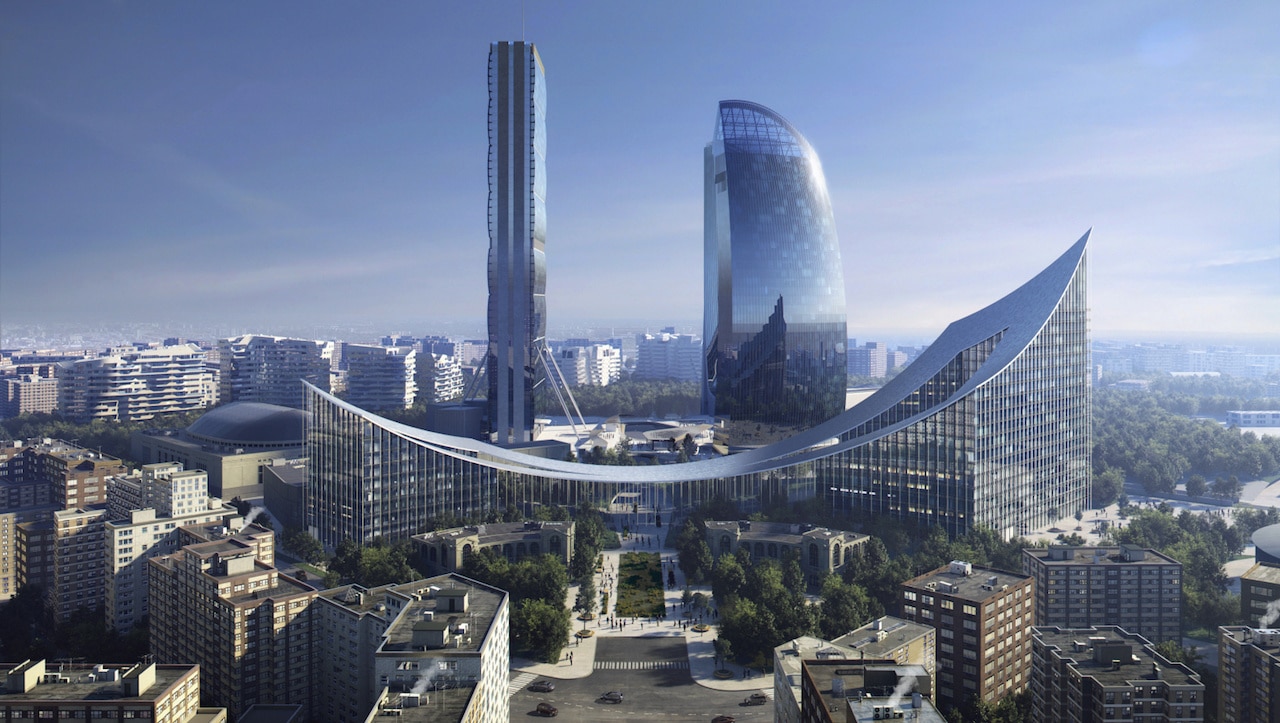
 View gallery
View gallery
At a time when Milan’s forests are growing vertically (Boeri Studio in Porta Nuova) and its towers are growing horizontally (5+1 AA in Rho Fiera Milano), CityLife’s fourth skyscraper is “lying down”. That’s why the building has earned the nickname “Lo Sdraiato” (the lying one). CityWave is the project by Bjarke Ingels that will complete the area to the north, towards via Domodossola. This office building is composed of two tall volumes (very tall, as visible from the renderings) connected by a single curvilinear roof that acts as a skyway to a gigantic portico, for a total length of more than 200 meters. CityWave’s striking glass geometries double the historic, still-standing Fairgrounds gates and define a monumental setting for what will become one of the main access points to CityLife. Construction is scheduled for completion in 2025.

 View gallery
View gallery
If the three towers are the true “monuments” of CityLife, the residences designed by Daniel Libeskind and Zaha Hadid, concentrated at the southern end of the site, are in a sense its ordinary urban fabric. By 2014, Libeskind had completed five buildings, ranging in height from five to 13 stories, and is currently working on a second group of three residential buildings scheduled for delivery in 2023. Hadid completed seven buildings between 2004 and 2014, also ranging from five to 13 stories. Beyond the references to traditional Milanese architectural patterns (Libeskind claims to have organized the spaces around a void inspired by the city’s courtyards) and the alignments suggested by the context (Hadid’s buildings are arranged along the axis of via Renato Berio, which continues under different names as far as Santa Maria delle Grazie), the Libeskind and Hadid residences are best described as different deconstructivist declinations of a language characteristic of their authors. Libeskind’s residence is more angular and layered. He enriches his façades with gridded frames. Hadid’s is more openly parametric and gently curvilinear. They are united by their spacious terraces and huge spaces, even in duplex configurations – emblematic of residences that appeal to a high (very high) end of the real estate market.
Piazza Tre Torri
One Works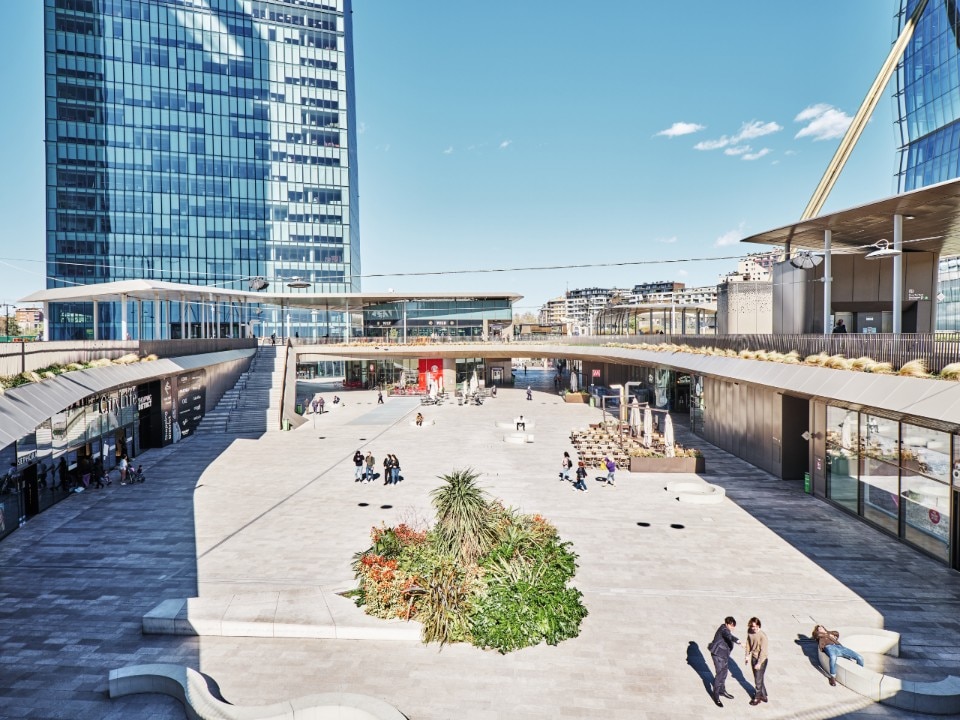
Designed by Milan-based studio One Works and completed in 2016, Piazza Tre Torri is CityLife’s main public space, located at its heart. It spreads over two levels that define a seamless connection between the park, the accesses to the towers and those to the subway station. Geometric barycenter of the district, the square stretches and curves to connect the two main axes that cross it, running from via Buonarroti and via Domodossola. Piazza Tre Torri is first and foremost a shopping place. However, its hybrid configuration of open but intimate space, partly covered, also encourages its use for other, unscheduled activities, from studying to co-working.
CityLife Shopping District
Zaha Hadid Architects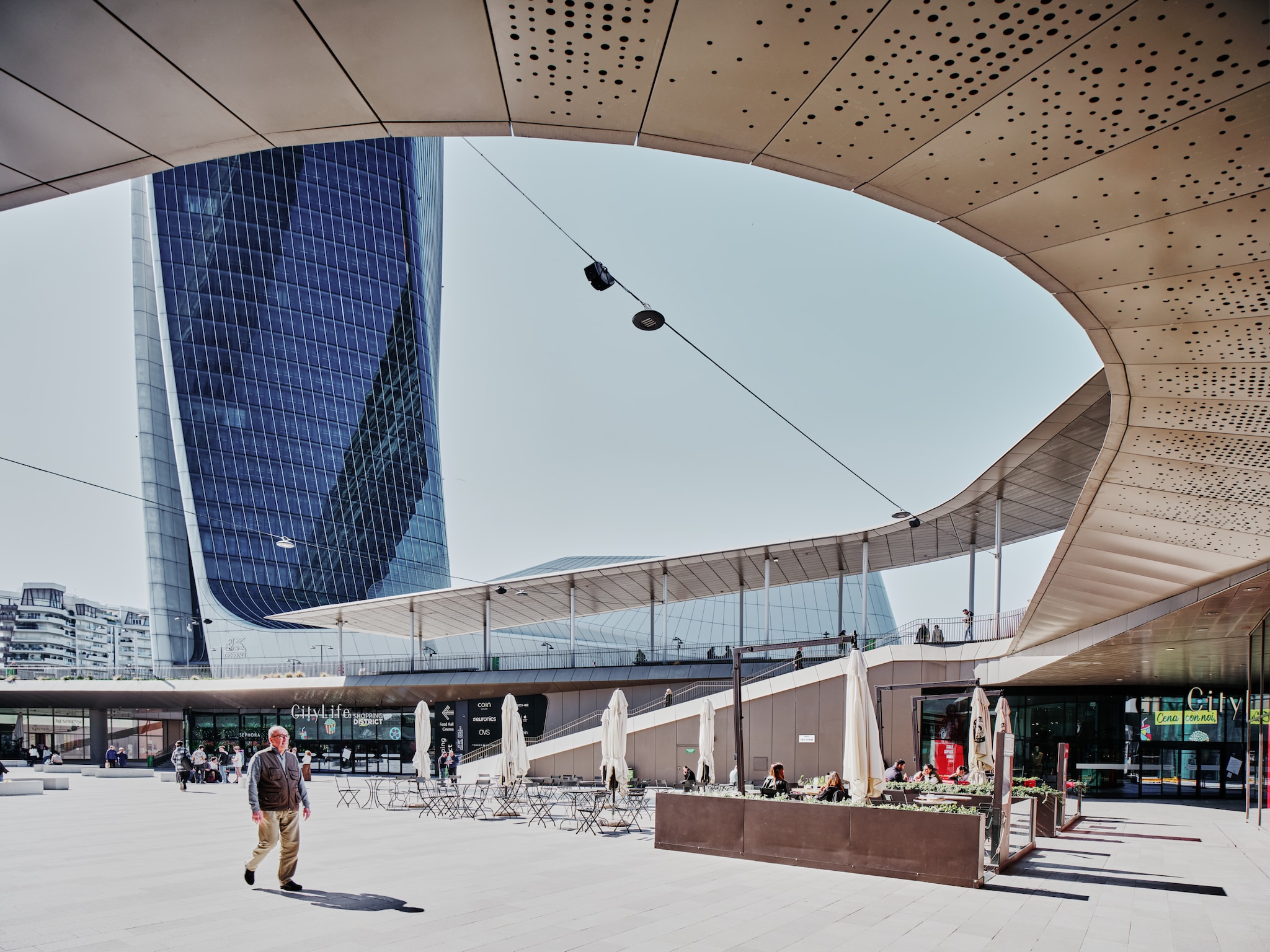
 View gallery
View gallery
Piazza Tre Torri is one of the three spaces that make up the CityLife Shopping District, a 30,000-square-meter urban mall. Zaha Hadid Architects designed its underground part, which is lit by large skylights and divided into two levels, connected both practically and visually by double heights with organic contours. This area also includes the multiplex cinema, the most important of the culturally oriented functions of the neighborhood. The open-air commercial gallery, designed by Mauro Galantino, also branches off from Piazza Tre Torri. The gallery is configured as a simple linear solid, bordered by elongated two-story buildings that house shops and businesses. Galantino’s building – open and relatively purist in its language – is an exception in the landscape of CityLife’s rather “cheeky” architecture.
CityLife Park
Gustafson Porter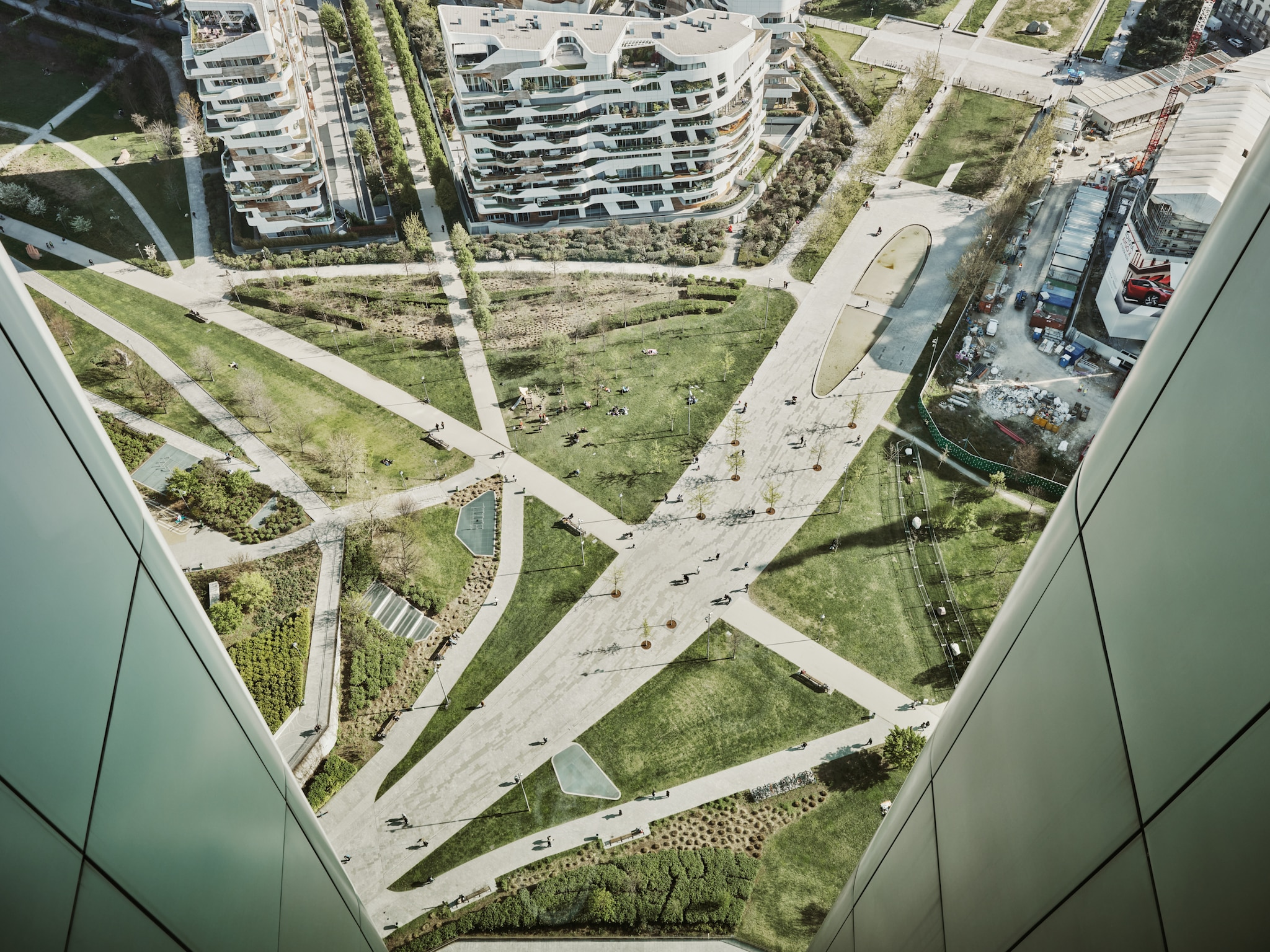
 View gallery
View gallery
At nearly 170,000 square meters, and still expanding, the Gustafson Porter design is the city’s largest park since Parco Sempione opened 130 years ago. While the numbers may be accurate (“may” because there is a margin of ambiguity in calculating its dimensions), this is certainly a green space with a twist. Parco Sempione is a square free of buildings, with a few monuments and public spaces (Castello Sforzesco, Arena, Palazzo dell’Arte) on its edges. CityLife Park, on the other hand, has a more articulated and fragmented shape, creeping into the gaps left between the buildings. It is a garden for contemporary strolling, carved out of the many paths, the ventilation grids of the underground parking lots, and fading seamlessly into Piazza Tre Torri. In 2015, Milan activated the ArtLine program, which is still ongoing and has placed dozens of contemporary artworks throughout the park’s spaces.



